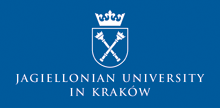Speaker
Description
The search for non-strange $B=2$ (dibaryon) bound/resonance states has a long history. The dibaryon state is of interest, which can be a molecule consisting of two baryons or a spatially compact hexaquark object. The $\gamma d\to \pi^0\pi^0 d$ reaction has been experimentally investigated at incident energies ranging from 0.58 to 1.2 GeV to study non-strange dibaryons. The angular distributions of deuteron emission in the $\gamma d$ center-of-mass cannot be reproduced by quasi-free production of neutral pions followed by deuteron coalescence. Additionally a 2.14-GeV peak is observed in the $\pi^0 d$ invariant mass distribution. These suggest a sequential process such as $\gamma d \to R_{\rm IS}\to \pi^0 R_{\rm IV} \to \pi^0 \pi^0d$. We discuss the newly onserved two isoscalar dibaryons ($R_{\rm IS}$) and an isovector dibaryon ($R_{\rm IV}$) observed in the $\pi^0\pi^0d$ and $\pi^0d$ channels, respectively. We also show the $\gamma d \to \pi^0\eta d$ reaction.

